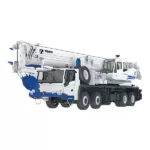Just like everything else, our environment needs protection. That is why it is essential to have the right tools and equipment to do so. Environmental equipment suppliers are important in this scenario because they tend to provide a wide array of solutions to meet various needs. These suppliers are lifesavers. They offer a diverse range of equipment that some of us may not have ever heard of before to monitor, protect, and preserve our natural surroundings. Moreover, these equipment can range from air and quality monitoring devices to waste management solutions and soil testing kits. We can see that environmental equipment suppliers are one of the most important people in the ecosystem to address different environmental challenges.
Individuals and organizations are encouraged to learn about the more common types of environmental equipment available and what they can do for us. Environmental equipment consists of a wide spectrum of devices and technologies, each serving a specific purpose. However, we are not here to confuse you. Let us introduce some of the more common ones that may ring a bell.
Types of Environmental Equipment
Air Pollution Monitors
Air pollution monitors, as their name beckons, they monitor the air pollution levels in the air. These devices are specially designed to detect the various types of pollutants in the air such as carbon monoxide, ozone, particulate matter, sulfur dioxide, and nitrogen dioxide. They are put to work in different places such as factories, cities, and indoors to assess the cleanliness of the air that we breathe in.
Their job can astoundingly help us identify where pollution is coming from and the degree of it. We can obtain a clearer picture of the air quality surrounding us after measuring the levels of different pollutants. This urges us to meet the standards of the air quality for a safer and healthier environment.
Water Quality Analyzers
Water quality analyzers detect and examine the chemical, physical and biological components of water in places like streams, rivers, lakes, and other miscellaneous underground sources. They measure vital factors like turbidity (how cloudy the water is), pH levels, dissolved oxygen content, temperature, conductivity, and the presence of pollutants and contaminants.
These are equipment that is most widely used because 70% of the world is made up of water (though we can’t be sure the current percentage is as high as before). Their role is significant in identifying any potential dangers to our water and the ecosystem it is supposed to support. By analyzing these parameters, water quality analyzers provide us with valuable insights into whether the water is suitable for swimming, drinking, fishing, and even wearing crops. It ensures that we have access to clean and safe water.
Weather Stations
Weather stations are equipped with special environmental sensors and other miscellaneous advanced technology to understand what is going on in the sky. They are basically systems designed to measure all sorts of things about the weather such as how fast the wind is blowing, how humid the air feels, how much sunlight we are getting, and even how hot or cold it is. These stations give us real-time information so that environment specialists can predict storms, track climate changes, and understand how the weather affects everything around us.
Their job, on the other hand, helps us understand the weather and its impact on our world. They do this by collecting data on weather patterns and trends, helping us plan ahead. Whenever you see the weather forecast on the news and making decisions about driving safely, flying planes, farming, and preparing for emergencies, you’ll know the weather stations are at work again. They keep us informed and safe at all times with great precision.
What are Environmental Sensors?
Environmental sensors are specialized devices manufactured with the purpose to detect and measure various aspects of our environment. They measure air quality, temperature, humidity, sound, and light intensity levels. To put it simply, these work by using different technologies to sense changes in their surroundings and convert them into electrical signals that can be analyzed and interpreted. Here are some of the more common sensors.
Temperature Sensors
Temperature sensors are the more sophisticated of the thermometers we use at home. They are devices that keep track of how hot or cold it is in different places. Pretty sure you’ll find them everywhere such as in offices, factories, outdoors and even your homes. These sensors help us to maintain temperature levels. For example, these sensors help us stay warm during cold weather and also keep us cool during hot weather. In Malaysia, where it is humid and warm all year round, temperature sensors are vital to keep the country’s temperature in check.
Humidity Sensors
Humidity sensors detect moisture in the air – telling us how dry or damp it is around us. The proper term for this is a hygrometer. It works by detecting how much water vapor is floating in the air compared to what it can hold. You can also find these sensors everywhere ranging from weather stations to our heating and cooling systems at factories, homes, and farms. Did you know that problems could occur due to too much or too little humidity? Thus, hygrometers prevent the formation of mold growing in our homes, particularly furniture. It also improves the environment surrounding us by ensuring our food does not spoil too quickly and that our skin stays supple and moist.
Air Quality
Air quality sensors are gadgets that are designed to pick up on tiny particles and pollutants in the air that we breathe. They detect nitrogen dioxide, sulfur dioxide, carbon monoxide, ozone, and other types of particles that can make the air stuffy and dirty. These sensors can usually be found in busy places such as school, city streets, and factories. Moreover, they can detect where the pollution is coming from and how bad it is. This is to ensure that prevention steps can be taken to protect everyone’s health.
Environmental Monitoring Solutions for Different Industries
Healthcare
Environmental monitoring solutions are vital for keeping the environment healthy and clean for both patients and staff alike. They pay attention to the air we breathe, making sure that it is free from deadly germs that could potentially take one’s life. Monitoring also involves checking humidity, temperature, and most importantly contamination levels to prevent the spread of infections. This is due to the fact that viruses spawn at certain levels of temperature. In order to prevent this, curated solutions need to be designed.
Food and Beverage Manufacturing
In the manufacturing of food and drinks, it is critical to keep track of the environment. This ensures that the produce is safe to consume. In these manufacturing factories, special monitoring systems are used to measure humidity, temperature, and how clean everything is during the production process. These systems help prevent any contamination that could make food inedible. For example, the manufacturing of yogurts requires consistent checking of the temperature and humidity levels. This is because even though you can argue that yogurts are made up of good bacteria, they can go bad too when handled at the wrong temperature.
Agriculture and Farming
On the other hand, the farming and agriculture industry require the use of special sensors to take care of crops and resources wisely. These sensors supervise how warm it is, dampness, and if there are enough nutrients in the soil. This information helps us shower our crops with just the right amount of water, fertilizer, and nutrients.
After all this, you can gauge the importance of selecting the right environmental equipment suppliers. They are vital when it comes to ensuring your monitoring systems and solutions work effectively. Make the smarter choice to improve your environmental efforts!







